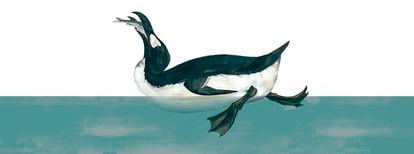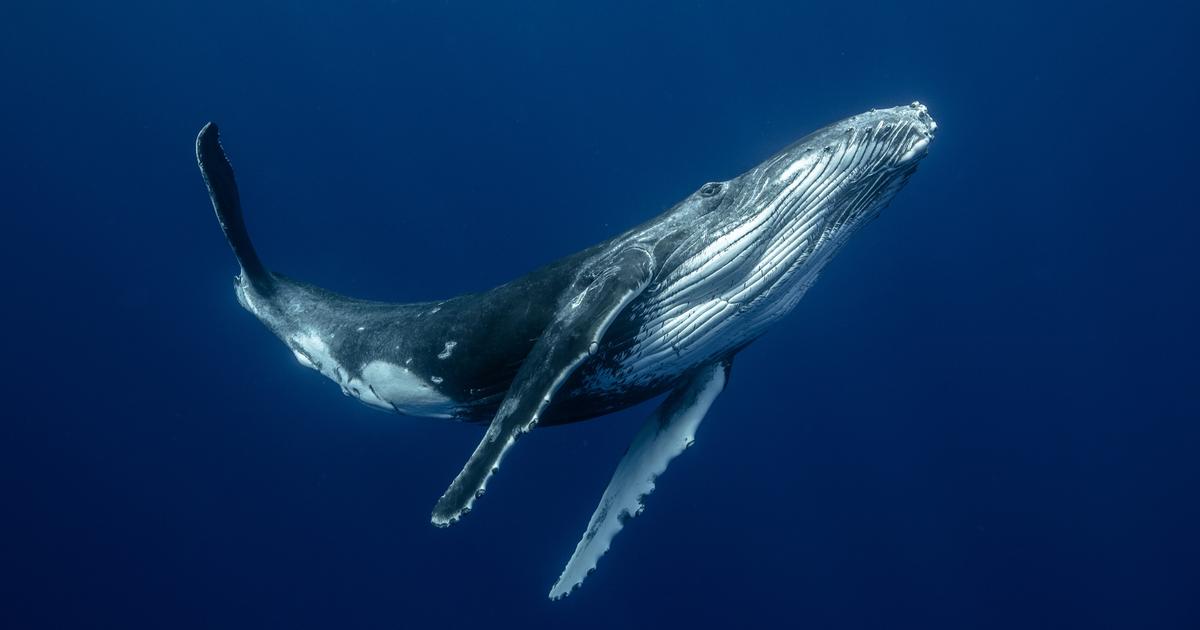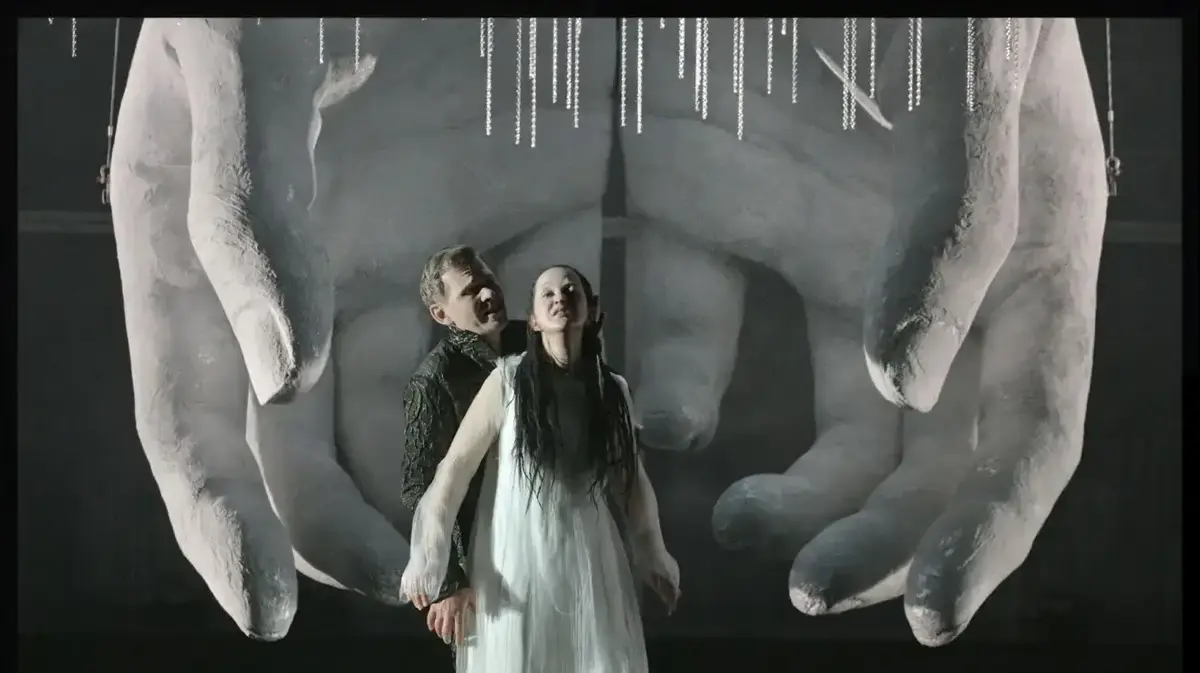Note to readers: EL PAÍS offers openly all the content of the Future Planet section for its daily and global contribution to the 2030 Agenda. If you want to support our journalism,
subscribe here.
Like the octopus that dreams, about which we had scientific news a few days ago, there is a river dolphin that turns pink when excited. "In the Amazon, they say that on nights with a full moon, the pink dolphin transforms into an irresistible man who swarms at dances and parties, seducing women in order to guarantee their reproduction (...) It is a very useful culprit to argue extramarital pregnancies ”, write Gabi Martínez and Jordi Serrallonga in
Invisible Animals. Myth, life and extinction
. Beyond folk humor, this particular South American dolphin (
inia geoffrensis
) is brownish-gray and not stealthy in freshwater, as long as it is left alone.
“Hydroelectric plants, oil spills, the use of pesticides or the contamination of metals caused by mining are factors that, when it does not kill or expel them, you dress them more pink than ever.
For them, it is the color of stress ”, we read in this book, with wild double-page illustrations by Joana Santamans, which the publishers
Nórdica
and
Capitán Swing
have just published jointly in Spain
.
More information
Thomas E. Lovejoy: the father of the concept “biodiversity” wants to save the Amazon from Bolsonaro
How much does it cost to kill a lynx or a bear in Spain?
Let's put the marine national parks in the territorial debate
"It is important to accept that some animals have very good reasons to hide from us," says Viggo Mortensen in the foreword. And he assures that "the exercise of searching without guarantees to find what we want is a valuable end in itself." In this case, however, the authors - a writer and a naturalist and archaeologist - drew the path beforehand to travel in search of stories of wildlife told by peoples around the planet and that referred both to animals that live hidden from us as extinct beasts and mythological characters that surely have existed in less spectacular formats than those of the legends, but that support cultural practices that extend in time. From them,The authors chose 51 specimens that include nothing less than a mermaid - called Parténope and founder of Naples - and an Asian Yeti, including shoebills, platypuses and black sheep, as well as bonobos and mammoths, or Pinta (Galapagos) tortoises and moas. of the old
Country of Birds
that is New Zealand.
In each case, the finding (or not) of scientific evidence is realized.
This decade-long adventure was about exploring all continents and at all times to find creatures whose existences and stories are part of human narration.
“This book is, at the very least, a reflection, not a pamphlet, on what happens on Earth, which is not 100 years from now, but a matter of hours, or weeks.
Every living species has its importance in the environment and its impact on history, even mythical animals have their reason for being, because they are part of the cultures of all countries, and some of them are also in danger of extinction ", he says. , in dialogue with this medium, the naturalist Jordi Serrallonga.
Now they are just cartoon characters
"He was a bighorn slave, in 1674, the last human to observe a live dodo, on the island of Mauritius (Indian Ocean)", we can read in the work
about this bird with stunted wings.
The dodo is part of the chapter called
Extinction
, which also includes the woolly mammoth of the tundras, the megaterium of the Río de la Plata;
the
geirfugl
, a penguin from the North Atlantic;
the colossal shark called megalodon;
the Yemen gazelle (or the biblical queen of Sheba);
the giant lemur from Madagascar and even the human from Flores (a
hobbit
), among others, because people "are also one more animal species," says Serrallonga.
These things circulate in Europe or Asia that have no basis of truth, such as that snorting rhinoceros horn powder contributes virility, and that encourages the hunting of already highly threatened animals
Jordi Serrallonga
Faced with the desire to know what is hidden in every corner of the planet, there is, however, a basal paradox that is to make visible species of flora and fauna that can
tempt
these predators greater than we are, and induce some to go in search of profitability.
Between curiosity and dilemma, Serrallonga opts: “The peculiarity of this expedition is that we are not going to find an Asiatic lion.
The only thing we want to make visible are the stories of these animals, because even if we want to see them, some are extinct.
Precisely because it has become extinct, the dodo (
raphus cucullatus
) became a symbol of conservation in Mauritius. We humans led him to disappear in the seventeenth century, because he did not fly and sailors could capture him very easily. This character from
Alice in Wonderland
or the cute stuffed animal from Disney movies now reflects a story that is little known. Meanwhile, in the 21st century, we have ended up with a giant tortoise, represented in the last specimen –the lonely Jorge– from Galapagos ”.
Science works with imagination, something that Serrallonga confirms by welcoming the myths: “The unicorns that Marco Polo saw could be some extinct Asian subspecies of rhinos.
Or the narwhal horn, which is a cetacean with a braided horn, could have been marketed as coming from unicorns.
There are bases of real stories that later are exaggerated ”.
Our priority is not to find a puma in the Atacama desert, but to find traces of its link with local cultures, because the inhabitants tell us about their encounters
Jordi Serrallonga
For the rest, although today things would not be done in the same way, as recognized by the specialist, “the cabinets of curiosities and natural science museums of the 19th century have allowed us to have collections of taxidermal remains that serve to study the genomes of each species, and even recreate ecosystems, make three-dimensional dioramas or get replicas of animals of which there is no data, with 3-D printers, as has been achieved with the spinosaurus, which was the only dinosaur that swam, the largest predator of the earth, and whose skeleton could be reconstructed from original bones found in Egypt and Morocco ”.
An illustration from the book Invisible Animals.
Myth, life and extinction.Joana Santamans
Giving visibility to these extinct species allows us to appreciate how valuable those that are alive are, according to this hypothesis.
“Our priority is not to find a puma in the Atacama desert, but to find traces of its link with local cultures, because the residents tell us about their encounters.
Sometimes, those of us who live far away have demonized the natives because they scared away an animal with a stone ... But it has been us, or the large corporations and projects, or globalization, who have caused these populations to decline, cornering them, cutting off their habitat ”, explains the naturalist.
Yes to sustainable tourism
If the key to the book is that “you don't touch everything that is invisible”, the opposite also happens, according to the co-author: “what you don't see can be crushed, because what you want, you end up taking care of; as soon as the local communities can appreciate that these animals bring them benefits, which is what is happening in Galapagos and Tanzania, for example, they protect them ”. Thus, says the expert, “some territories become national parks for sustainable tourism and charge tickets, because animals are kept there. For example, if gorillas are visited, in a controlled way, in the company of
rangers
, their protection is made possible in countries like Rwanda ”.
With similar criteria, the fishing industry should leave the sea protected areas for the reproduction of fauna, because the surplus of these spaces will necessarily go to other authorized fishing sectors, in Serrallonga's opinion.
If there are no pollinating insects that allow flowers to reproduce, we will not be able to breathe.
Simply out of selfishness, we need to change our attitude and give positive messages, because all is not lost
Jordi Serrallonga
But, in the deep sea, only the giant squid from deep space seems to stay out of reach of today's extractive technology. Elusive, extinct or mythological fauna, the protagonists of the book are undoubtedly the invisible animals, which too often must defend themselves against “invisible predators”, such as poachers and buyers of material of animal origin that is used in the luxury or leisure industry, such as ivory or rhinoceros horns. In the latter case, the brutality of stripping the rhinoceros of its horn fuels the harmful and absurd trafficking of a snobbish good: virility, and that encourage the hunting of animals already highly threatened,because someone pays a small fortune to do an exotic ritual ”, clarifies Serrallonga.
The local people conserve as best they can the biodiversity of regions depleted also by too visible predators, such as those who destroy ecosystems with their crops (soybeans, palm oil) and deprive wild animals of their habitats: “The orangutans in Indonesia, for For example, they walk on the ground, because their forests are true deserts, without a single tree. And before they were the ones who spread the seeds so that new plants would sprout. The same happens with bees ... if there are no pollinating insects that allow flowers to reproduce, we will not be able to breathe. Simply out of selfishness, we need to change our attitude and give positive messages, because all is not lost ”, he suggests.
Hence, the book closes with the 350 thousand square kilometers of barrier reef that can still be seen clearly from far away and that is home to hundreds of species of fish and thousands of mollusks.
The coral deposit will be a contrast test of how much we mitigate the effects of climate change.
That is why the epilogue is a dedication to the "only living being visible from outer space."
FUTURE PLANET can follow on
,
and
, and subscribe
here
to our 'newsletter'
.





/cloudfront-eu-central-1.images.arcpublishing.com/prisa/CY3MBVCW4BE4ZPFNI4WI4AQ6IE.jpg)

/cloudfront-eu-central-1.images.arcpublishing.com/prisa/2KVLLY26ZNGK3OCBRI676KYGKA.jpg)






